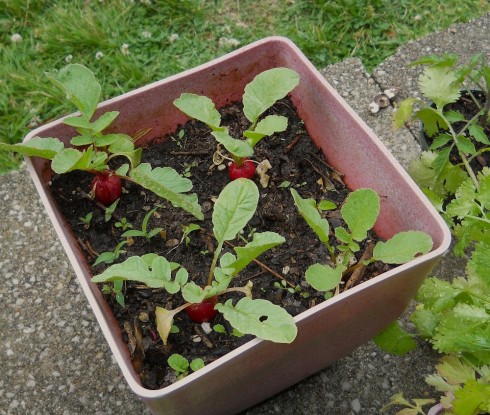In addition to eating the bulbs of the radishes, the leaves are also edible. I heartily endorse Clotilde Dusoulier’s Radish Leaf Pesto. The slight spiciness of the leaves gives it a delightful frisson.

Pesto recipes are pretty flexible. I added some fresh cilantro from the garden, some frozen basil leaves, used ground almonds for the nut component, a bit of Manchego for the cheese, and doubled the garlic. I also added a little white wine to reduce the viscosity. I quite liked the end result — we had it on pasta — even if some others though it was a little too adventurous.

